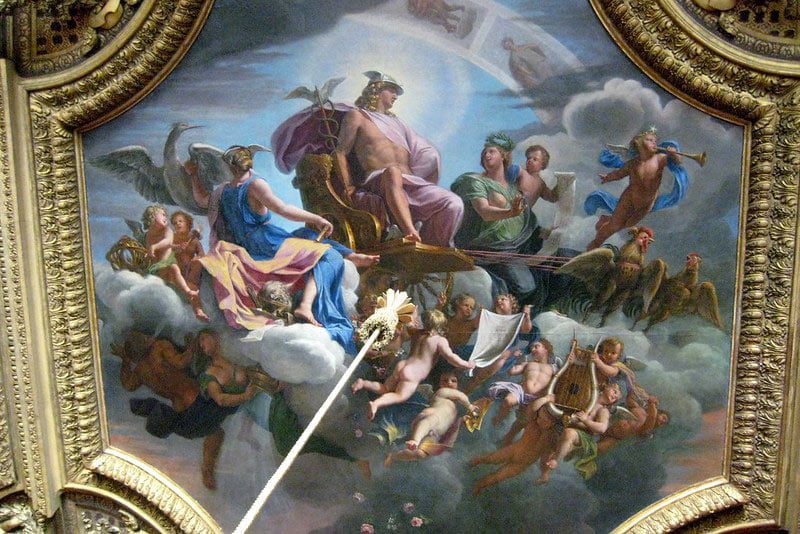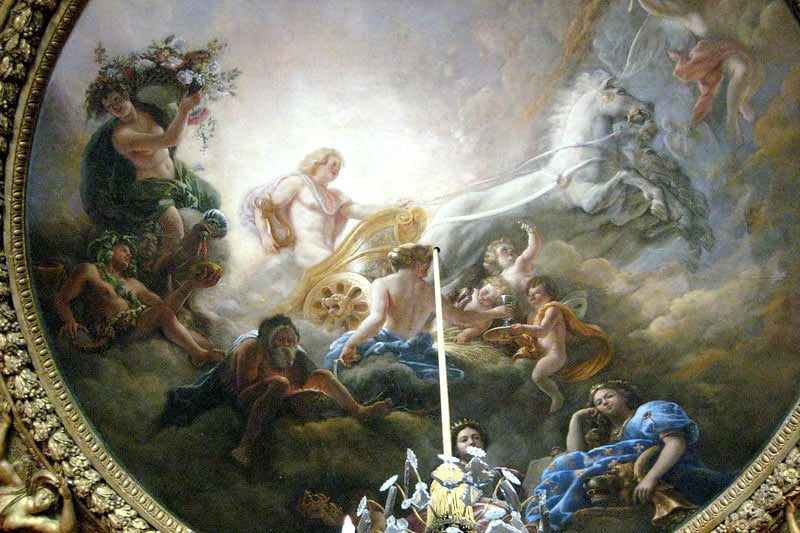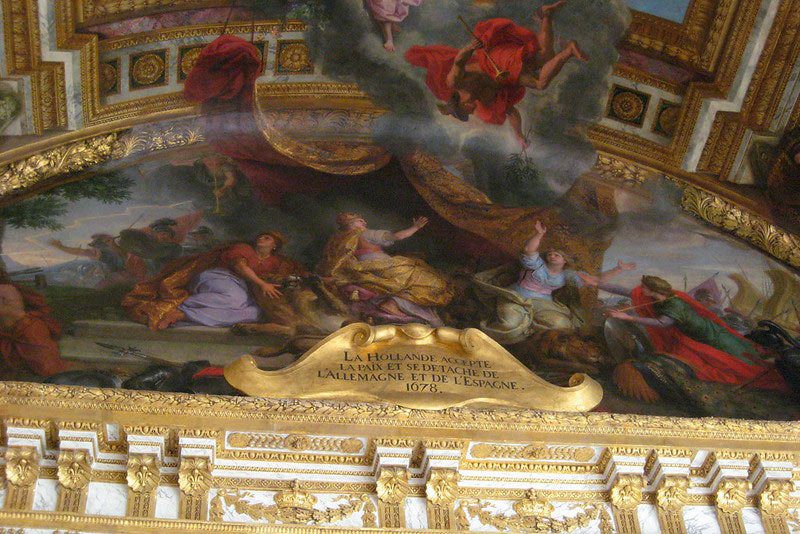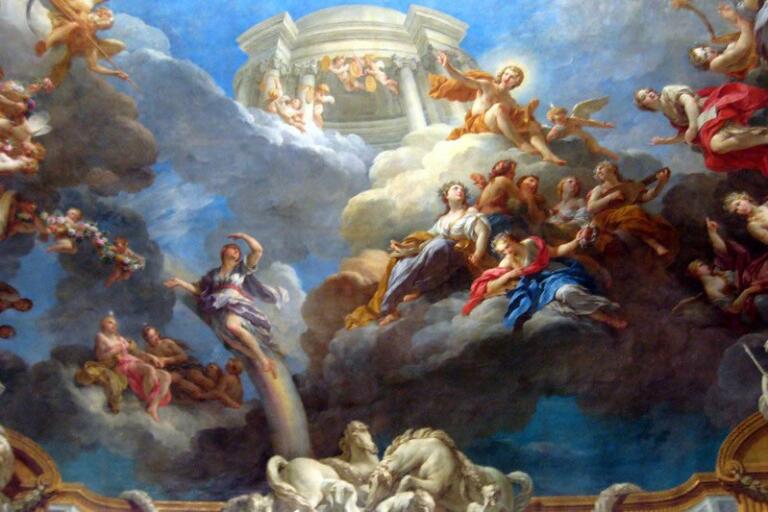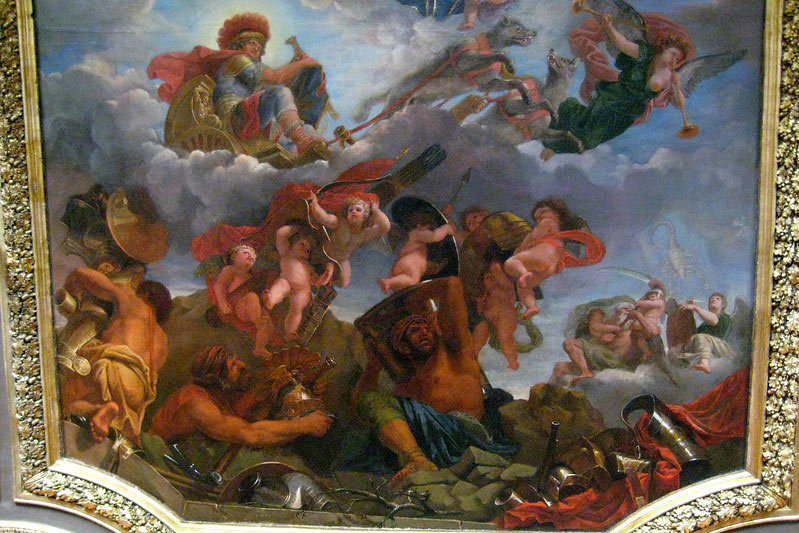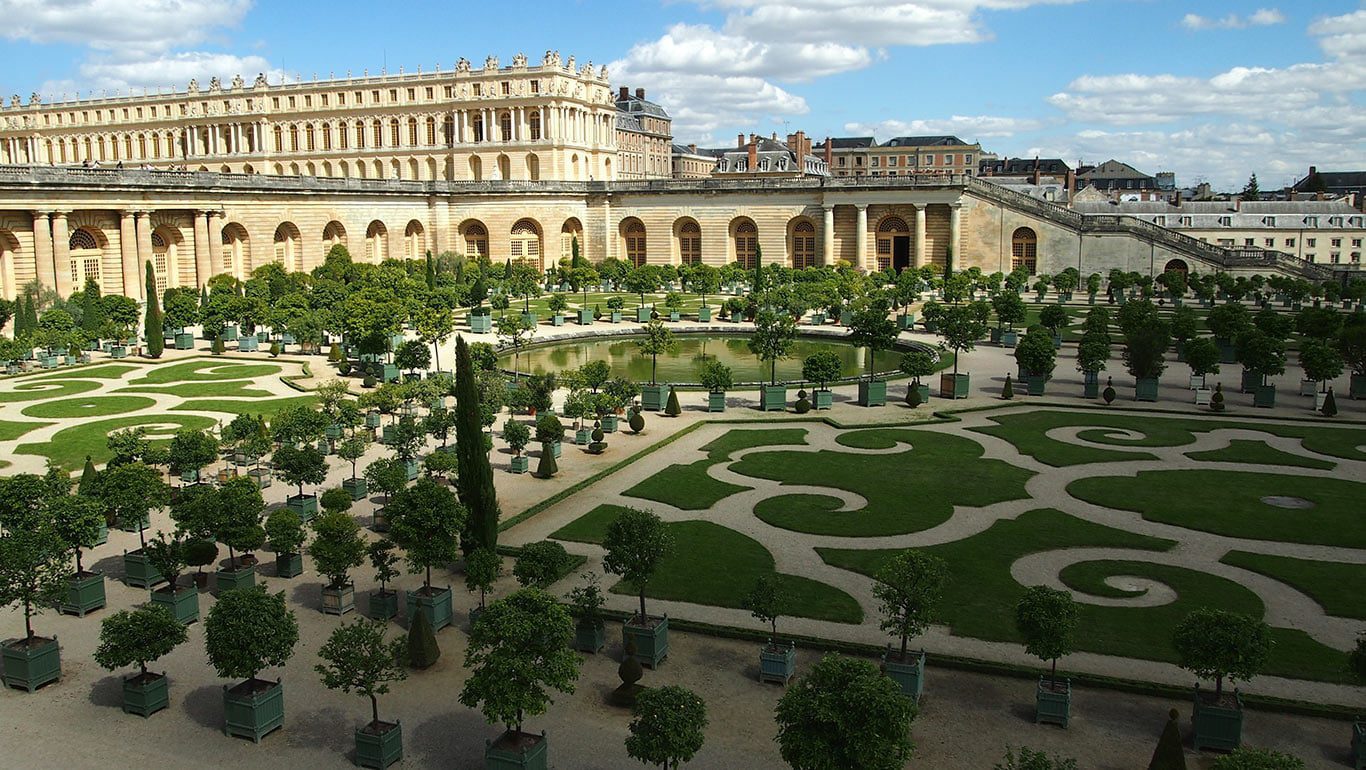We know it to be a lot of things in that sense but we really don’t know anything until we’ve actually seen it. From its grandeur and classical architecture to its rich history and even the food, there won’t be a single thing in Versailles that isn’t fascinating in some way or other.
The first thing that usually pops to mind when people think Versailles is without a doubt the palace of Versailles. So without a second’s thought, this is always the destination that tourists hurry off to see first and there is absolutely nothing wrong with that. However if you knew that 30 000 workers toiled over the construction of the palace just to appease King Louis XIV’s appetite for grandeur and self-glorification, the extent to which completely emptied the nation’s coffers, well, you just might see more than the beauty of a palace. The interior design of the palace will take your breath away with every ceiling, door and corner meticulously decorated with carvings and many with Greek and Rome mythology themes.
A ticket into the palace will include a walkthrough audio guide and you will have the chance to visit the King and the Queen’s Apartments. There are rooms dedicated to the Roman Gods with the opulence coming to a peak in the Hall of Mirrors. It was once a ballroom and the 17 mirrors and equally large windows on the other side will amaze any spectator. Consequently it was the room where the French suffered a humiliating defeat and signed over Alsace-Lorraine to Germany in 1871. It is also the exact same room in which Germany signed the peace treaty for WWI in 1918 which also gave Alsace-Lorraine back to France. Ironically, karma certainly has a way of making this room useful.
The Gardens of Versailles are accessible from the palace and is considered to be one of the largest royal gardens throughout the world. It boasts a magnificent French style which is known for geometrically aligning everything from the terraces, flower beds to the water fountains. So what you’ll find in the gardens is a perfect symmetry of everything. Definitely not something you see everyday.
Once you’ve had enough of sights and history then why not head over to the Marche Notre Dame Food market? It offers up authentic tastes in French cuisine and the boutique aisles will give you a peek into the treasures of rural France. A stark contrast to the opulence of the palace but a great experience nonetheless. There are home made tarts to try out and buttery pies to take a bite out of and what’s great is that it’s just outside the palace gates and much cheaper and worth the experience than the food court within the palace.
Versailles truly offers up an experience into the past. If you’re in Paris it goes without saying that you should visit Versailles and not just to wonder at the ostentatious architecture on display, but the history behind it. There is a saying that goes “art imitates life and life imitates art” and this is certainly true of Versailles.
The architecture and the design will no doubt give you insight into life at the French court and once you get over the opulence and realize how preposterous it seems now, just simply head over to the best food market on offer in Versailles.
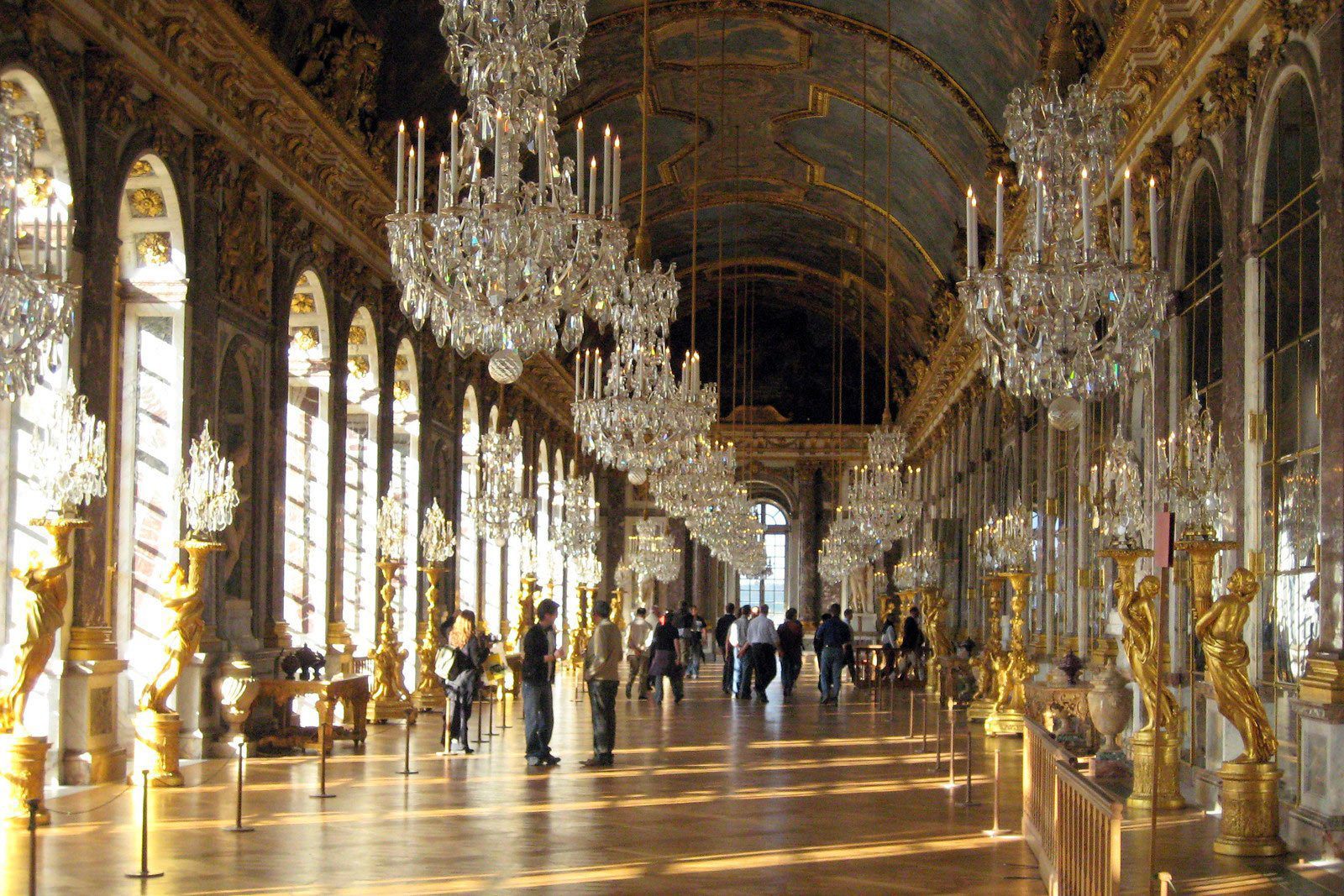
La Galerie des Glaces (The Hall of Mirrors), or La Grande Galerie (The Grand Gallery), is the central gallery and most remarkable feature of King Louis XIV’s third building campaign of the Château de Versailles (The Palace of Versailles). Construction began on the 73-metre long room, along with La salon de la Guerre, to the north, and La salon de la Paix, to the south, in 1678 and was completed by 1684. The three rooms, designed by Jules Hardouin-Mansart, connect the grand appartement du roi with the grand appartement de la reine.
The distinctive feature of the hall is the seventeen arches, each containing twenty-one mirrors, that reflect the seventeen arcaded windows overlooking the gardens. The room demonstrated that the new French production of mirrors, which at the time were luxury objects, was capable of stealing the monopoly away from Venice.
The ceiling, painted by Charles LeBrun from 1681 to 1684, represents the military victories of Louis XIV. In a departure from the ceilings in the grand appartement du roi, LeBrun depcits Louis XIV directly instead of through allegorical guises. The 84,000 square feet of floor are covered in parquet. Gilded sculptured guéridons (pedestals) or torchères (flares), alternating between groups of children and women draped with cornucopias were commissioned in 1769 to line the hall, replacing the part of the original silver furniture.
The Hall was used daily by courtiers and visitors for passing through, waiting and for meeting people. It was used for diplomatic receptions, with the throne installed at one end such that ambassadors would need to cross the entire hall watched by the court. The Gallery hosted the wedding celebrations of the Duke of Burgundy, grandson of Louis XIV, in 1697, of the son of Louis XV in 1745 and the masked ball for the wedding of Marie-Antoinette and the Dauphin, the future Louis XVI, in May 1770. It was also here that the treaty of Versailles was signed on 28th June 1919, which sealed the end of the First World War. Since then, the presidents of the Republic of France continue to receive the official hosts of France here.
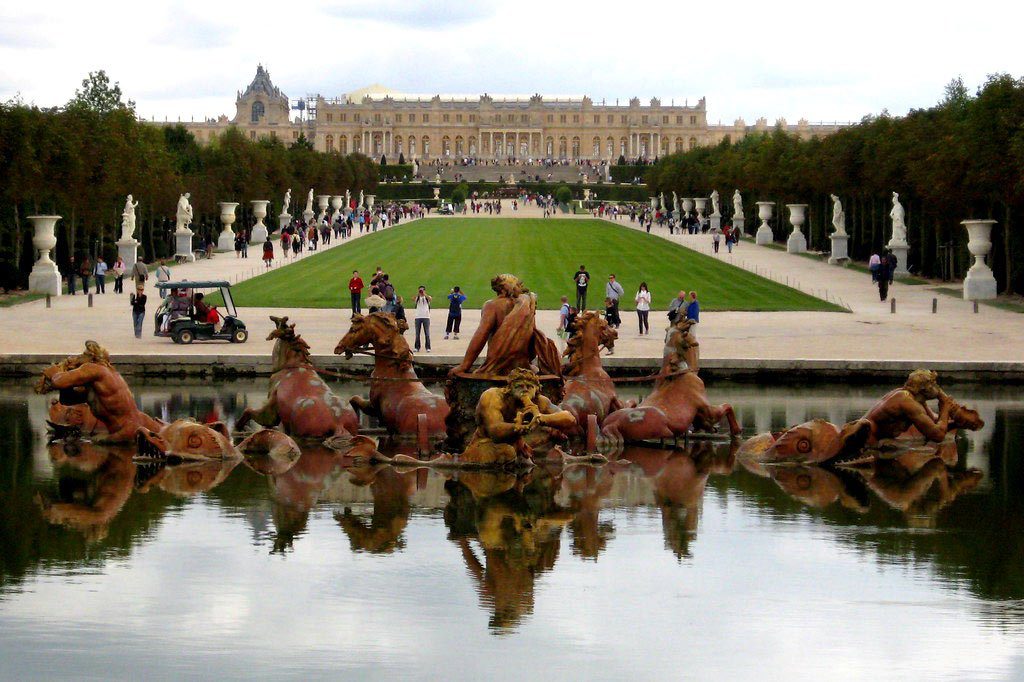
The Bassin d’Apollon (Fountain of Apollo) was constructed on the site of a rectangular quadrilobate pond (then known as Swan Pond) dug in 1636, during the reign of Louis XIII. The lead sculpture, from which the fountain took its name, executed by Jean-Baptiste Tuby in 1668, depicts Apollo in his chariot drawn by four horses, and surrounded by four Tritons and four sea monsters. The sculpture was brought to Versailles from the Gobelins works in 1670, and was gilded and installed the following year.
In Greek and Roman mythology, Apollo (Ἀπόλλων — Apóllōn or Ἀπέλλων — Apellōn), the ideal of the kouros (a beardless youth), was the archer-god of medicine and healing, light, truth, archery and also a bringer of death-dealing plague. As the patron of Delphidia (“Pythian Apollo”), Apollo was an oracular god. He was the prophetic deity of the Delphic Oracle, as well as one of the most important and many-sided of the Olympian deities. Apollo also had dominion over colonists, over medicine (mediated through his son Asclepius), and was the patron defender of herds and flocks. As the leader of the Muses (Apollon Musagetes) and director of their choir, he is a god of music and poetry. Hymns sung to Apollo were called paeans.
Apollo is son of Zeus and Leto, and the twin brother of the chaste huntress Artemis, who took the place of Selene in some myths as goddess of the moon.
In Hellenistic times, especially during the 3rd century BC, as Apollo Helios he became identified among Greeks with Helios, god of the sun, and his sister similarly equated with Selene, goddess of the moon.
Château de Versailles Ceiling Paintings
